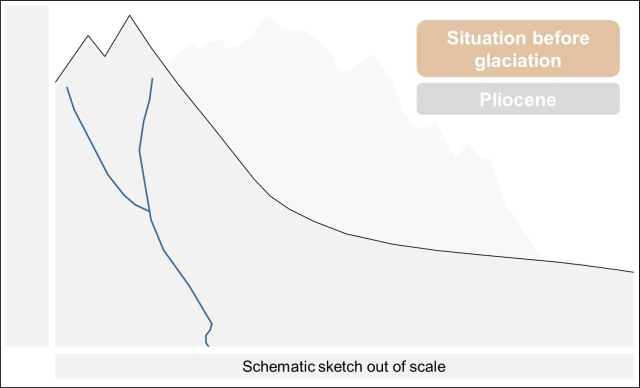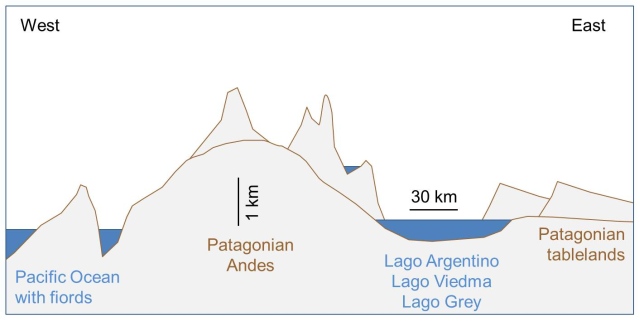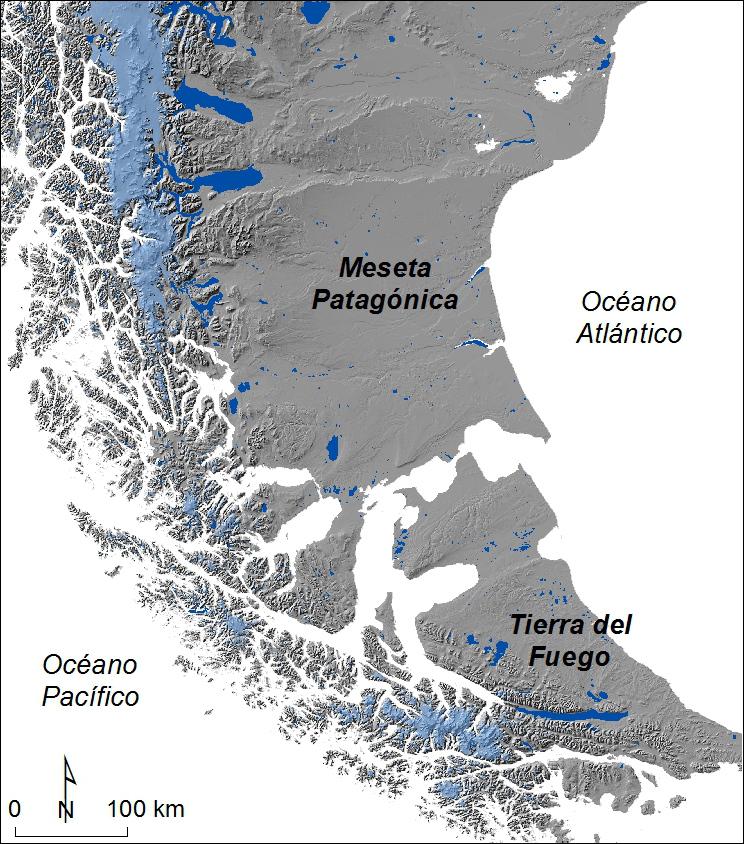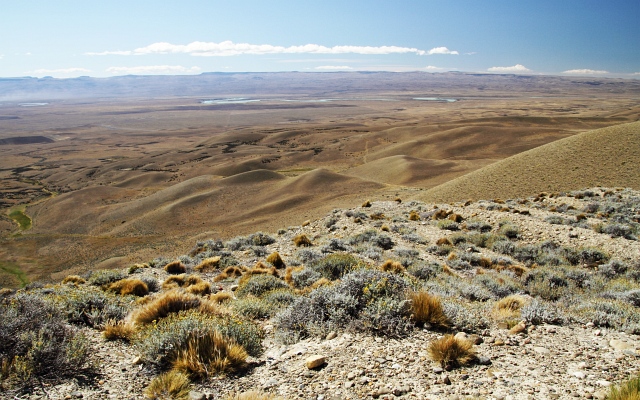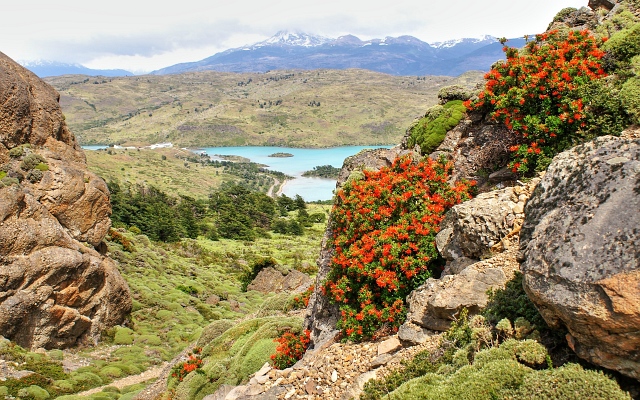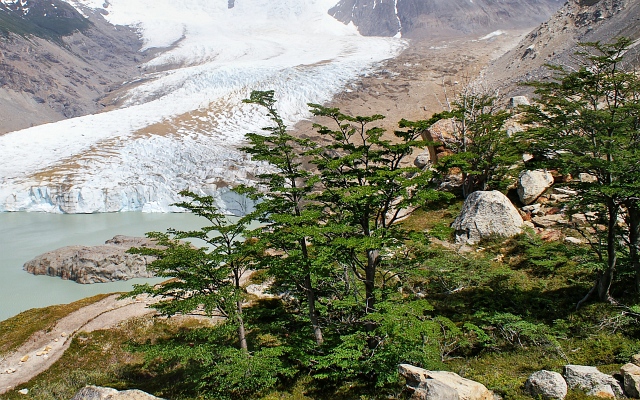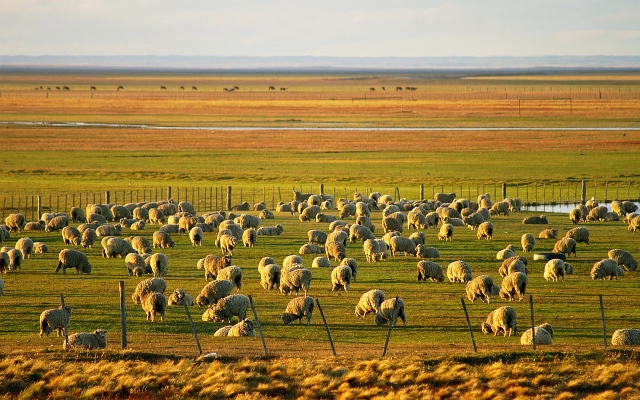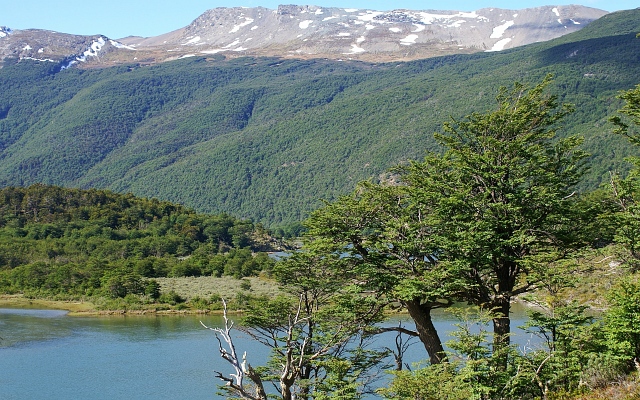The north-south stretching Andes do not only influence the climate, but also the vegetation. Use your knowlwdge obtained in the task about climate and glaciers to assign the major types of vegetation to their correct locations.
Here you can see a broad-leaf forest, which is dominated by the evergreen southern beech species Nothofagus betuloides.
A steppe landscape with grazing sheep.
Individuals of the deciduous southern beech species Nothofagus pumilio on a lateral moraine.
Steppe landscape with large shrubs, such as Embothrium coccineum with red flowers, and isolated forest patches.
Desert characterized by shrubs and tussock grasses, with areas of bare ground in between.
Grab the photo by holding the symbol near the upper left corner, and drag the symbol into the corresponding circle in the map.
Show solution
Since westerly winds dominate and bring moist air from the Pacific Ocean (but hardly from the Atlantic Ocean) to the Andes, the western side of the Andes is humid whereas the eastern side is semiarid to arid. The higher the Andes are at a certain latitude, the more arid are the eastern forelands. The rain shade is less pronounced in the eastern part of Tierra del Fuego, so that steppes prevail. In contrast, deserts characterize the landscapes farther north, on the eastern side of the Southern Patagonian Ice Field. At the eastern rim of the Andes, the drylands are complemented by larger shrubs (such as Embothrium coccineum) and forest patches, and are replaced by deciduous forests (mainly Nothofagus pumilio) in many valleys. The western side of the Andes, and also part of the southern coast of Tierra del Fuego, are characterized by an extremely oceanic climate. The comparatively mild winters there allow the occurrence of evergreen forests (Nothofagus betuloides). The tree line hardly exceeds 1000 m asl., which is however higher than many of the glacier tongues in the same area.



















